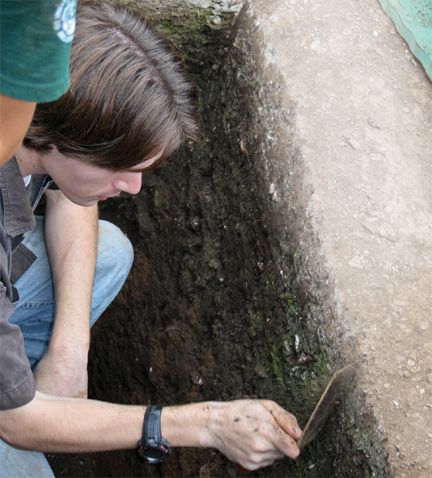Tracing Humanity’s Trajectory

By Colleen Delaney-Rivera, Associate Professor of Anthropology
Humans are a puzzle. Anthropology informs us that, although all human cultures on Earth have commonalities, the specifics vary widely by society and culture. As an archaeologist, my goal is to document what specific activities occurred in the past, but also to chart long term trends, and apply that knowledge to the present. My particular data sets for tracing our trajectory are wide ranging, but with common themes. My work is made possible with the support of CSU Channel Islands and the group of dedicated and hard core archaeology students I have worked with since 2007.
In California I am documenting human occupations along the coast over the last 7,000 years. Most of my work thus far focuses on land called Rancho Guadalasca. This parcel of land, over 36,000 acres, has been subdivided over the years; today portions are owned by private individuals, the state of California, and the federal government; CI is also located here. Students and I undertake archaeological surveys and excavations locally to answer questions about the prehistoric Chumash and their resource use and social organization. We delve through the historic record to document how the Chumash persevered through the Mission period, and to understand how the original Rancho Guadalasca landowner, an illiterate woman, managed a 36,000 acre ranch for over 35 years at a time when few women owned property. We also work with contemporary Chumash exchanging ideas and perspectives.
In summer 2011 I began a new excavation project in Illinois with help of a President’s Summer Fellows award. In Illinois I am excavating a thousand-year-old village, the inhabitants of which may represent colonists from Cahokia, the largest and most complex prehistoric society north of the Basin of Mexico.
As the roots of humanity extend back for millions of years, I also collaborated on a project examining the activities of our pre-human ancestors two million years ago in eastern Africa. We fed goat limbs to zoo animals and compared the tooth mark damage on the bones. These marks help us determine whether our pre-human ancestors were hunters or scavengers.
The world is large, and the questions keep coming. My next research focus is a comparative project in coastal Australia where I will plan to compare coastal California with coastal New South Wales.
